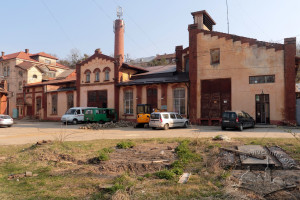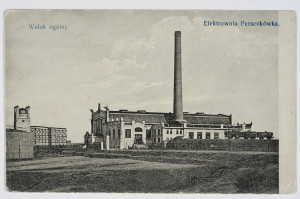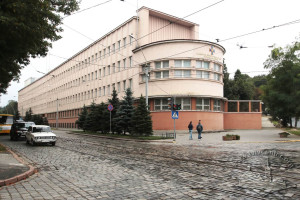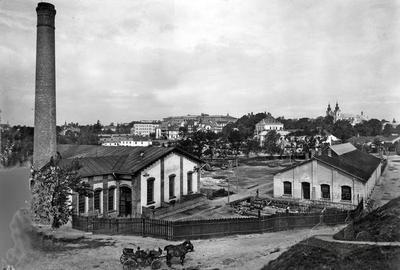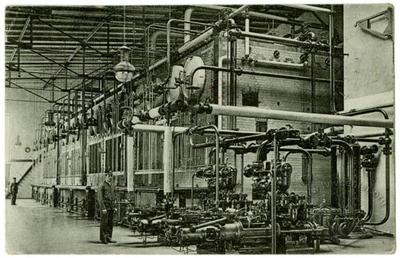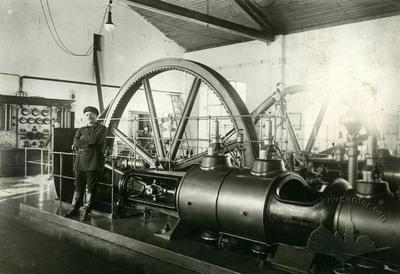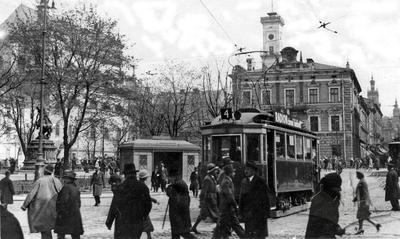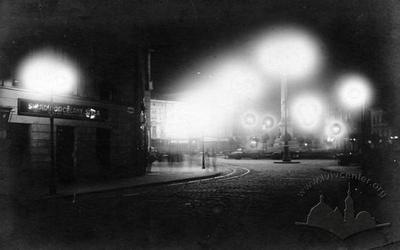
Electrification of Lviv ID: 268
The theme outlines the spaces where the electrification of Lviv began in the late 19th and early 20th centuries.
Story
The electrification of Lviv is associated with two major events for the city at the turn of the century — the opening of the General Provincial Exhibition and the construction of the Municipal Theatre. These two evens were designed, among other objectives, to highlight the modernity and progress of Galicia within the Habsburg Empire. One of the visible manifestations of the contemporary idea of progress was the use of electric power, whose network rapidly became an integral part of the city's infrastructure.Small local power plants enabled the early electrification of prominent city buildings, such as the Sejm and the Savings Bank. However, Lviv’s first municipal power plant began operating in 1894 with the opening of the Provincial Exhibition. It was constructed to supply electricity to the tram line running from the railway station to the Exhibition pavilions near Kiliński Park. Soon after, additional tram lines were introduced. While the direct current power plant was sufficient for powering the tram system, it did not allow for the broader expansion of electricity use in other aspects of urban life.
The construction of the Municipal Theatre in 1900 marked a new stage in the city's electrification. A distribution station and a battery system were installed in the building’s basement, providing electricity for the theatre, street lighting in the city center, and new consumers. To manage these services, the Municipal Electric Facilities enterprise was established, the Siemens & Halske electrical equipment company opened a branch in the city, and private electrical installation bureaus began to emerge.
The construction of a more powerful alternating current power plant in 1908 made it possible to meet the growing demand for electricity, supplying street lighting, private homes, and the expanding tram network.
The large-scale electrification of the city was also closely linked to the emergence of a professional community of electrical engineers. One of its key figures was Józef Tomicki, head of the Municipal Electric Facilities, who played a significant role in the construction of both municipal power plants and the expansion of the city's electrical network over several decades. Another notable figure was Gabriel Sokolnicki — an entrepreneur, rector, and long-time professor at Lviv Polytechnic—who carried out electrification projects for major enterprises and institutions across Galicia.
The materials on this theme allow us to take a broader view from the perspective of finding and implementing new technological solutions in the general context of social and economic processes in the city at the turn of the XIX-XX centuries.
The articles on this theme were written by Andriy Kryzhanivskyi, an energy engineer and researcher of the history of electrification. The project was created in cooperation with the Museum of the History of Electrification of Lviv Region.
Author of the theme description: Taras Nazaruk, Lviv Interactive
People
Józef Tomicki
– Józef Tomicki
was an engineer who managed the Municipal Electric Tracks (Miejskie Koleje Elektryczne) in
1897-1901 and the Municipal Electric Facilities (Miejskie Zakłady Elektryczne) in 1901-1925 in Lviv. Under his leadership,
the electrification of the city was launched.
Gabriel Sokolnicki
– An electrical engineer, an entrepreneur, an owner
and shareholder of several electric installation companies, who also was rector
and, for many years, professor of the Lviv Polytechnic. Sokolnicki implemented
a number of projects connected with electrification of cities and industrial
enterprises in interwar Poland.

